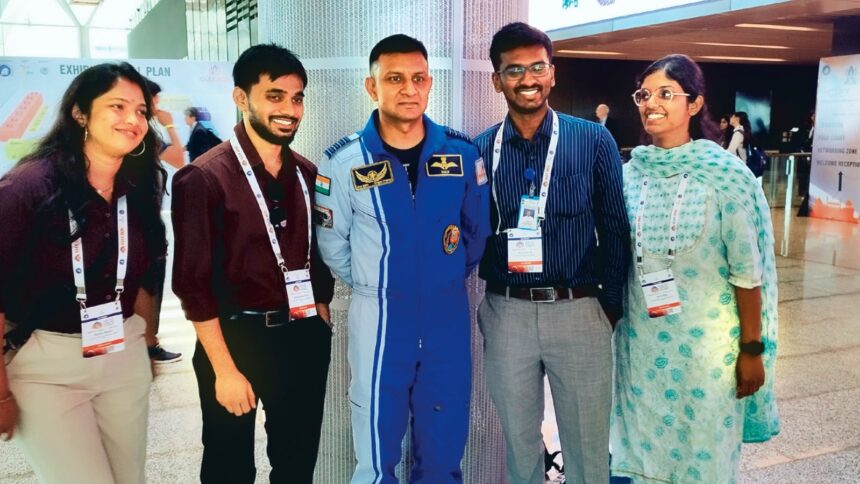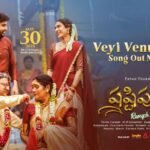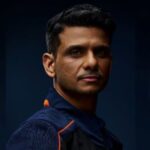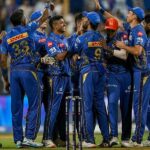From his training and selection to the moment his terminally ill mother met the Prime Minister months before she passed away, one of , Angad Pratap, talks about his journey since being selected for Gaganyaan — the country’s first crewed spaceflight mission scheduled for 2027.
who believes space should be accessible to all, spoke to during an -backed event in the national capital. At the venue, he patiently clicked photographs with all those who approached him, asked students about their studies, reassured a shy child by saying he looked “very handsome” — and eventually had to remove his astronaut jacket to leave without further delay.
Edited excerpts from the interview:
There are definitely certain parallels between the two domains — while saying this, I do not want to imply that piloting is essential for becoming an astronaut. Astronautics is all about doing science in space; it should be accessible to one and all. We need people from all communities — scientists, doctors, engineers, philosophers, those from the arts and commerce world, as well as pilots.
When space becomes accessible to everyone — more and more human beings sent from across the world — we will start thinking of ourselves as representatives of our planet. That is when we will grow beyond the smaller issues we are embroiling ourselves in.
It just so happens that space travel is all about aviating: if you want to go to space, you need to traverse the atmosphere, and when you come back, you again need to traverse the atmosphere. What this requires is a lot of quick decision-making and staying ahead of a very, very fast-moving machine. The speed at which the machine is moving requires your brain to function even faster… A lot of these things are experienced by pilots here on Earth. Experientially, piloting is very close to being an astronaut. It’s not that others aren’t capable; they’re simply not trained for it.
So, test pilots — by virtue of their academic prowess and their experience aviating inside fast-moving vehicles — are more suitable and more easily trainable, and thus are given preference whenever a prototype spaceflight starts.
Anyone who had cleared the test pilot examination — the most difficult examination in the Indian Air Force — was considered eligible. There were IQ tests, flying-skills assessments, and stress-tolerance evaluations.
In the process, what I realised was that your knowledge can always be prepared. I’ll draw an analogy with a computer: if you have an adequate hard drive and RAM, you can load any program. So the selection process was really about checking the size of the processor capability.
In fact, there were many people brighter than us in various fields who did not make it. There were essentially a number of boxes you had to tick, and if even one box was unchecked, you could be the brightest human being but still get rejected. I know of brilliant test pilots who lost out due to factors beyond their control — for example, the medical evaluation. So, you have to thank your stars if you do make it.
Normally, space experiments are conducted inside large, almirah-sized racks onboard a space station. But Gaganyaan only has the crew module — no racks, just a small, box-like apparatus. Most experiments, as worldwide, will be in microbiology, materials science, and combustion engineering. These three fields can propel space exploration to the next level — interplanetary travel.
The best way to perform any experiment is to have the scientist onboard the station so settings can be tweaked and improvised to get good results. That may not always be possible. Instead, there are short-duration experiments with many autonomous features. So someone with some knowledge of how the experiment works, what results are expected, and an understanding of data purity and integrity can initialize the sequences. None of this develops overnight — you train for a good five to six months on a lot of maths and statistics.
An astronaut has to train for many things that other human beings don’t, because they enjoy the comforts of our planet…
There is a lot of attention that comes with being an astronaut — your life becomes public. I learn so much from interacting with people: their dreams inspire me and have deeply impacted my personal growth. I’ve seen other astronauts share the same view.
It’s one of our responsibilities to further the cause of science and to inspire others to take up science. I always tell young students to stay in India, not chase quick money, but invest in unique opportunities such as working with ISRO.
The interaction was a bit personal. Last year, my mother — who was terminally ill — came all the way from for the ceremony. I requested the Prime Minister, ‘Can you please meet her?’ and he obliged. Normally, to meet the PM you have to undergo a Covid test and follow strict protocol. He said it didn’t matter and that he would meet her. He is magnanimous that way. This was in February last year, and I lost her in August.
More important, however, was his vision for space. ISRO has laid out a solid roadmap, but we all need to understand that it requires sustained financial support. It’s encouraging that the Government is handholding my parent space agency and that ISRO is also committing its resources.
Her stories have resulted in the city government investing in high-end tests for the poor and acknowledging errors in their official reports.
Dutt also takes a keen interest in the country’s space programme and has written on key missions like Chandrayaan 2 and 3, Aditya L1, and Gaganyaan.
She was among the first batch of eleven media fellows with RBM Partnership to End Malaria. She was also selected to participate in the short-term programme on early childhood reporting at Columbia University’s Dart Centre. Dutt has a Bachelor’s Degree from the Symbiosis Institute of Media and Communication, Pune and a PG Diploma from the Asian College of Journalism, Chennai. She started her reporting career with the Hindustan Times.
When not at work, she tries to appease the Duolingo owl with her French skills and sometimes takes to the dance floor.








